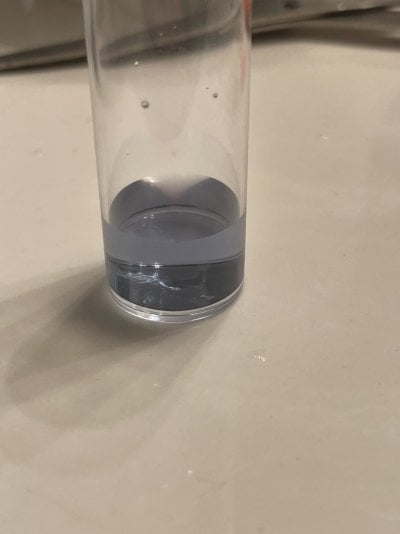Navigation
Install the app
How to install the app on iOS
Follow along with the video below to see how to install our site as a web app on your home screen.
Note: This feature may not be available in some browsers.
More options
You are using an out of date browser. It may not display this or other websites correctly.
You should upgrade or use an alternative browser.
You should upgrade or use an alternative browser.
Alk from 8.75 -> 10.2
- Thread starter BudgetR33f
- Start date
- Tagged users None
In any case, your alkalinity is within a safe and healthy target. Higher alkalinity can lead to faster growth rates in calcifying corals, which is a benefit. 
If you want to go down a rabbit hole, you can make a DIY alkalinity standard that will work for any titration kit:

 www.reef2reef.com
www.reef2reef.com
A standard can help you know exactly what endpoint color you must strive for. Let’s say the standard is 7dKh. You can use the safest kit to reach 7dKH, and then you’ll know the correct endpoint.
If you want to go down a rabbit hole, you can make a DIY alkalinity standard that will work for any titration kit:

DIY alkalinity standard
For folks who may want to evaluate the accuracy of their alkalinity test kits, here are two suggested ways to do it. One is DIY and one is a mostly commercial standard with one DIY step. Method 1 Standard solutions could be made with sodium bicarbonate, but it can be hard to be sure it hasn't...
 www.reef2reef.com
www.reef2reef.com
A standard can help you know exactly what endpoint color you must strive for. Let’s say the standard is 7dKh. You can use the safest kit to reach 7dKH, and then you’ll know the correct endpoint.
I think I’d add a drop or two more. Looks too gray for my preference.Is this pink enough? If so my alk is closer to 9.45
I highly recommend the Red Sea Alkalinity Pro test kit for the future. It’s very reliable. That’s what I use.
Thanks for the help. I don’t necessarily want total accuracy, i just want it to be consistent. I’m still curious as to why it would jump. I’ll test tomorrow and see if it is the same. If it is, I’ll just leave it.In any case, your alkalinity is within a safe and healthy target. Higher alkalinity can lead to faster growth rates in calcifying corals, which is a benefit.
If you want to go down a rabbit hole, you can make a DIY alkalinity standard that will work for any titration kit:

DIY alkalinity standard
For folks who may want to evaluate the accuracy of their alkalinity test kits, here are two suggested ways to do it. One is DIY and one is a mostly commercial standard with one DIY step. Method 1 Standard solutions could be made with sodium bicarbonate, but it can be hard to be sure it hasn't...www.reef2reef.com
A standard can help you know exactly what endpoint color you must strive for. Let’s say the standard is 7dKh. You can use the safest kit to reach 7dKH, and then you’ll know the correct endpoint.
When I do that it shows around 10 dkh. I’ll try the red sea one next time i run outI think I’d add a drop or two more. Looks too gray for my preference.
I highly recommend the Red Sea Alkalinity Pro test kit for the future. It’s very reliable. That’s what I use.
I’d trust the salifert test kit for now. Your alk is within target, and total accuracy isn’t important. I keep my alk around 10dKH with thriving corals and clams.When I do that it shows around 10 dkh. I’ll try the red sea one next time i run out
If you want the alk lower, just stop the dose and let it trend down. Your tank doesn’t seem to have a high demand in the moment.
Good luck.
I also forgot to mention im in the process of switching to red sea blue bucket from a pre mixed salt which is another reason that the alk could be different, although it still doesn’t explain why it would jump so much higher. I’ll just try to maintain the new alk if possible. Anyways, thanks for the help everyone
Similar threads
- Replies
- 4
- Views
- 214

















